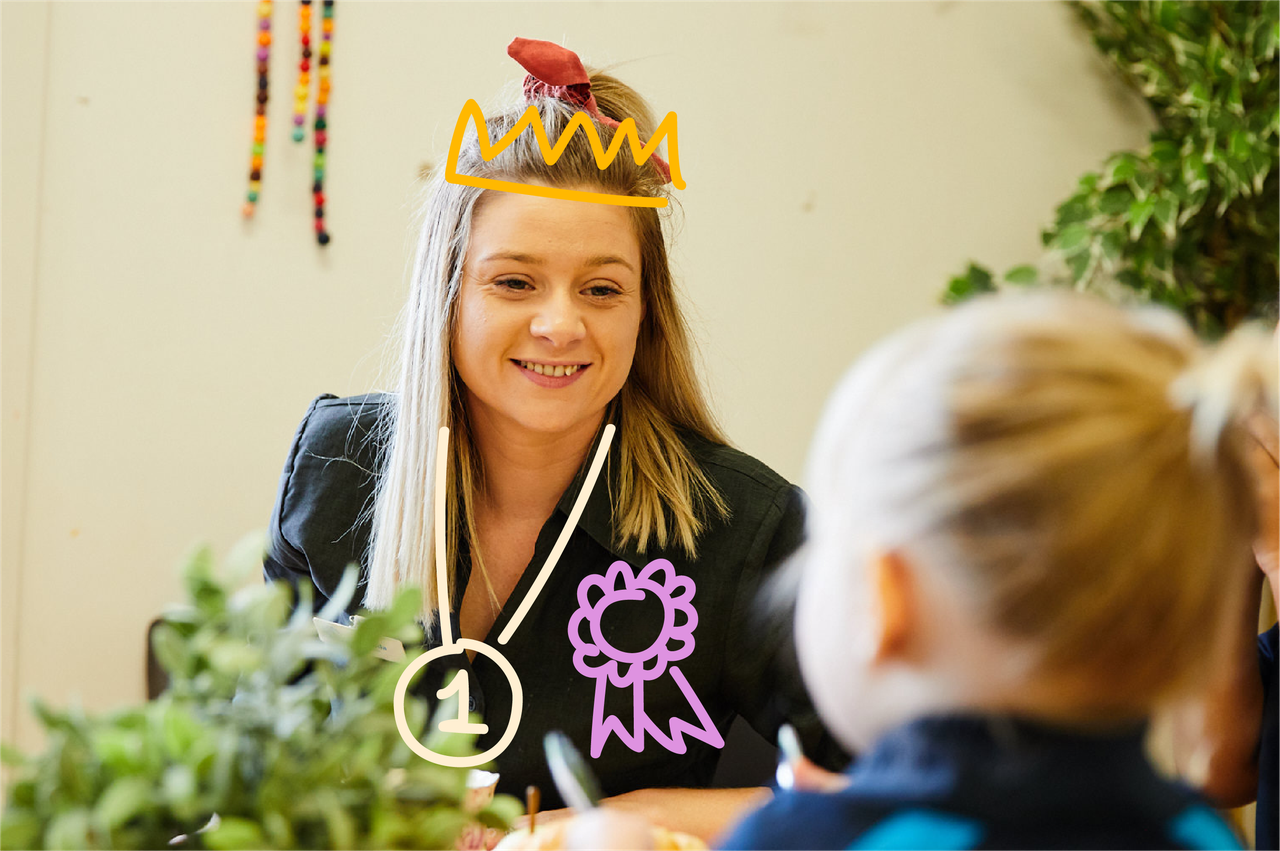
When your little one starts childcare, you might hear the educators speak about childcare ratios. This refers to the qualifications of the educators and the number of educators there need to be for each child in a particular age group.
According to the Australian Children’s Education & Care Quality Authority (ACECQA), ‘the National Quality Framework (NQF) sets out the minimum child ratio requirements for children’s education and care services.’
What are childcare ratios?
Monique is a childcare centre director with more than 20 years of experience. She explains that the ratios differ very slightly from state to state. ‘These ratios are in effect to ensure quality of care for children,’ she says.
- In all states the regulations state that on the floor there needs to be one qualified member of staff per four babies (0-2).
- In all states the ratio is one member of staff per five 2-3 year olds (except for Victoria where it is one member of staff for every four children).
- In NSW, SA and Tasmania, there needs to be one member of staff to 10 pre-schoolers (aged 3-5); while it is 11 pre-schoolers in the other states.
Each centre in a state has the same ratios irrespective of whether they are privately owned, attached to a school, or attached to a workplace. Staff need to ensure that the ratios are in effect at all times. If someone is on their lunch break, or off the floor doing some planning, they cannot be counted in the ratios.
Qualifications of educators
As well as the ratios of educators to children, there are also requirements relating to the qualifications of the educators that are on the floor at any one time. For instance each centre with more than 25 children requires a qualified teacher to be in attendance.
‘The hope is that the teacher being university qualified brings that in depth knowledge and experience to the centre,’ explains Monique.
What about family daycare?
Family daycare has a different system of ratios to work towards. Theirs is a 1:7 educator to child ratio, with a maximum of four children preschool age or under. These ratios includes the educator’s own children aged under 13 years, if there is no other adult to care for them.
How do the childcare ratios in a childcare centre work in practice?
‘To ensure that ratios can be met, working as a team really helps,’ shares Monique.
For instance with a team you’d be more likely to have two adults and eight babies (0-2). So say two of the eight babies are asleep, there’s two of you with six babies. One of the workers can change a couple of nappies or heat up some bottles while the other is playing with the remaining babies. Most centres should be using the idea of “being” and “doing” – for instance one of the team members are being there, physically present and on the floor with the kids ready to respond.
The other can then be doing something for the kids, such as heating a bottle or settling a child for a nap. You can share out the needs of the children. In a pre-school setting, it’s one adult to 10 children. In our centre for instance we have three adults to 26 children. So you tend to overcompensate with the ratios rather than working to the bare minimum of the ratio.
You’ll find that working to the bare minimum ratio doesn’t happen often though, as there will usually be a child absent, or someone else there to help if you need it. For instance if something happens and a child needs one on one help, you can then reach out to the centre director or another member of staff to come and support you while you deal with the cut knee or the upset tummy.
Who is responsible for ensuring the childcare ratios are in effect?
‘The director is usually the person responsible for ensuring that the ratios are in place,’ advises Monique. ‘If they’re not in place, the centre will be fined. The ACECQA regulations officers can pop in at any time to check on your ratios. All centres have the same ratios, so there is no difference between childcare centre A and childcare centre B in each state. The ratios are not changed or adjusted in order for the childcare centre to make more money, they’re changed by ACECQA to ensure quality of care for the children. That’s the priority.’
How have the childcare ratios changed over time to benefit the children?
‘In the old days it was different,’ explains Monique. ‘If all of the two year olds were having their nap the staff would all go off to lunch, meaning the ratios were out. But regulations changed to specify that you need to be in ratio and present on the floor at all times. So now you would have other staff come in to cover your place while you go to lunch, regardless of whether children are asleep or not, which is so much better for the kids.’